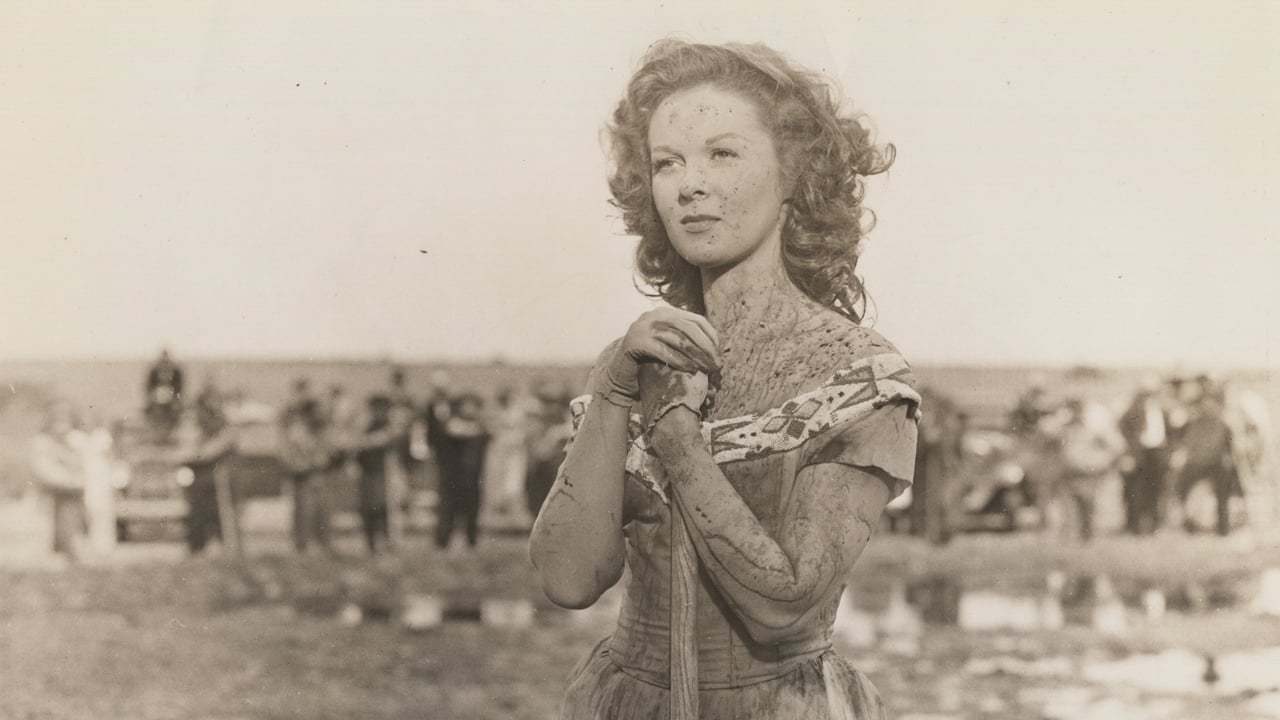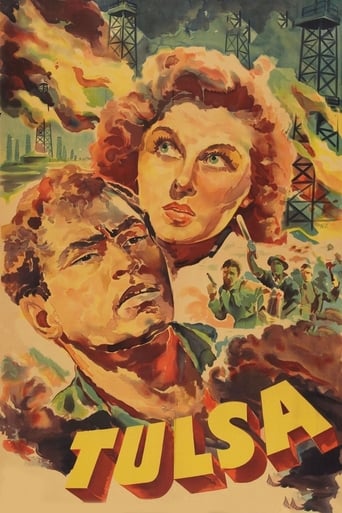

Very Cool!!!
... View MoreExcellent, a Must See
... View MoreA film of deceptively outspoken contemporary relevance, this is cinema at its most alert, alarming and alive.
... View MoreI didn’t really have many expectations going into the movie (good or bad), but I actually really enjoyed it. I really liked the characters and the banter between them.
... View MoreSusan Hayward plays a woman named Cherokee, to convince the audience she's part Native American. If she was fully white, the audience would never accept a love triangle between Robert Preston and Pedro Armendariz, a Mexican playing a full Native American. As it is, the film doesn't really treat Pedro with the same respect and chances that it gives to Robert Preston. Susan lives in Tulsa, Arizona, and the majority of the film is the pursuit of discovering oil on her land. It's incredibly boring. If you want to watch an oil movie, watch Giant. Neither she nor Robert are portrayed as particularly good people, so how are you supposed to root for either of them? Add in the proverbial "aw-shucks" hick character played by Chill Wills, and you'll find yourself leaving the room for more popcorn without pressing pause.Until I watched Tulsa, I thought Susan Hayward was immune to the slew of bad movies most actors make in his or her lifetime. She's one of my all-time favorite actresses, but even she has made some doozies. Save your time and watch a good Susan Hayward movie instead.
... View More(Some Spoilers) It's when cattleman Neise Lansing, Harry Shannon, found his prized cows poisoned from oil emitted from a nearby oil rig belonging to Tanner Petrouloum that he threw a fit. Mindlessly charging at the rig and yelling obscenities it suddenly started gushing crude with the top platform of the oil rig dropping down to earth on Lansing's unprotected, in him not wearing a regulation hardhat, head killing him.With her father dead Mr. Lansing's red headed and hot blooded daughter Cherokee, Susan Hayward, who's also a quarter American Indian demanded that the CEO of the oil company Bruce Tanner, Lloyd Gough, pay her for her father's dead cattle who were poisoned by spillage from his oil rig. With Tanner not being too cooperative in her dispute with him Cherokee later runs into oil man John Brady, Ed Begley, who had one two many at the local saloon. Brady too drunk to know whet he's doing handed Cherokee his deed to the land that's adjacent to that of the land that native American's Charlie Lightfoot, Chief Yowlachie, and her cousin Jim Redbird, Pedro Armendariz, own. By the time the evening was over Bradly was killed in a bar brawl with him not being around to sober up and take his land deed back!Seeing her chance of getting back at Tanner by beating him at his own game, the oil business, Cherokee started to turn her sights on the oil that she knew was under the ground in the late John Brady, now her, land and went to work on it! Not getting anywhere at first it wasn't until handsome and sure of himself Princeton rock specialist Brad Bradly, Robert Preston, the late John Brady's son showed up at Cherokee's rig that things started popping! Popping so much that within the next six months some dozen oil well popped up from under Cherokee's land that no one, including oil baron Tanner, ever figured were there!It's later when Cherokee decided to drop her square and not too greedy, in not wanting to make millions by polluting the land, fiancée Brad Brady in order to go into business with Tanner as his partner in the oil business that things started to get hot and gushy in and around Tulsa! With her and Tanner having oil rigs popping up all over and polluting the grazing lands and streams outside the city. With the environmentally conscious Jim Redbird refusing to have any oil-well drilled on his land Turnner decides to have the court declare him mentally incompetent thus taking his land away from him. This leads to Jim losing it when he finds his cattle, like those of Neise Lansing's, dead from poisoned water that both Tanner's and Cherokee's oil rigs polluted.**SPOILERS*** We soon see how dangerous it was for Tanner together with his new partner Cherokee to pump the land dry of its oil with the stream that Jim's cattle drank from catch fire when Jim just lit a match and threw in it to see if there was any oil let in it. In what looked like an end of the world fire and brimstone ending both Cherokee who finally saw the light, by seeing her entire land go up in flames, and her now back again boyfriend Brad risked their lives in dynamiting the burning oil wells before they spread into Tulas itself.P.S It was that fiery incident that thought everyone involved in the oil business to cool it and not go overboard in pumping the land dry of oil when in the end there wouldn't be, due fires and pollution, any land left to pump oil out of!
... View MoreThis film took me by complete surprise with great acting by veteran actors, Susan Hayward, (Cherokee Lansing) and Robert Preston, (Brad Brady). The film starts out with Cherokee and her father who raise cattle on their ranches in Tulsa, Oklahoma and one day they find all their cattle dying along a stream of water and as they smell the water, they realize the oil refining business was contaminating the soil and killing the cattle. Cherokee goes with her father to tell them about what their oil business is doing to their cattle and while they are talking, an oil structure struck oil and a large part of a building fell on her father and killed him. It was from this point in the film when Cherokee Lansing decided to get revenge for her father's death and declares war on the oil men and their owners. There is plenty of action and even some romance. There is great photography of a fire burning through an oil field and people risking their lives in order to save their oil fields and friends and family.
... View MoreBoy, was this a very predictable film and some of the poorest acting of 1949, but it had one great redeeming feature, namely, the very beautiful Susan Hayward who looked so lovely in Technicolor and quite frankly, acted very well considering some of the lines she was required to say. Robert Preston had very little to do, but the fight scene at the Oil Rig was so amateurish one could see the punches missing by about 6 inches, while Chill Wills was obviously rehearsing for his role in "GIANT" (albeit made several years later). The action scene as the climax of the movies was not very good, even for the year it was made. Poor old Pedro Armendariz was sadly miscast. but struggled through manfully.
... View More